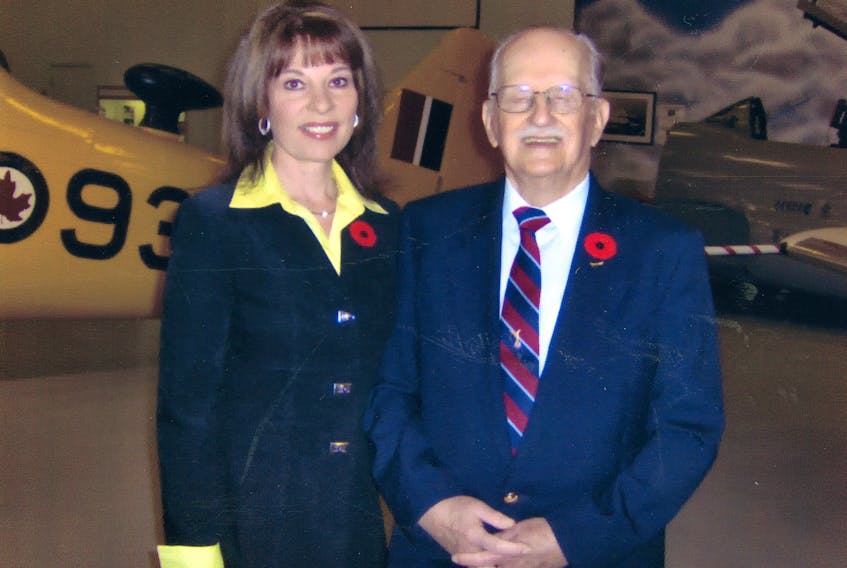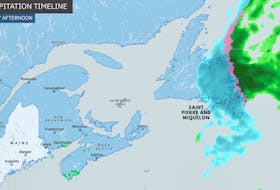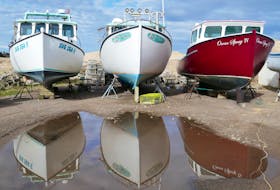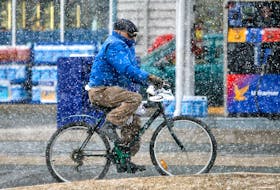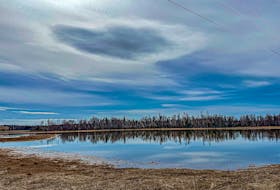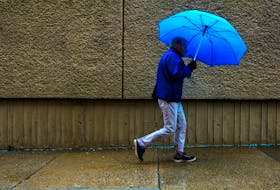Someone once said, if it wasn’t for the weather, most Canadians wouldn’t be able to start a conversation. Well, if not for very concise wartime weather reports, you and I may not be enjoying the freedom we do each and every day.
A few years ago, I had the pleasure of meeting an amazing gentleman. I will never forget the afternoon I spent with John Entwistle.
Mr. Entwistle was a navigator in the Royal Air Force during the Second World War. After his first tour, he took a course in meteorology and was transferred to the Met Squadron based at Tiree in the Inner Hebrides, off the west coast of Scotland.
He flew dispatches also known as sorties with the 518 Met Squadron on the meteorological reconnaissance flight Bismuth – 500 miles out over the Atlantic – sending back weather observations taken every 50 miles. The task of the aircrews was to climb and descend while recording and transmitting details of temperature, pressure and humidity, as well as wind velocity, presence of cloud and rain at different atmospheric levels.
When we sat down to talk about his wartime experiences, he spoke like it was yesterday. There was sadness in his voice, but also a great deal of pride.
He recounted … “… rain fell from overcast skies and gale force winds drove large waves on to the beaches of Normandy as dawn broke on Monday, June 5th, 1944.
“Eisenhower had tentatively selected June 5th as the date for the assault. On June 4th, conditions were clearly unsuitable for a landing; wind and high seas would make it impossible to launch landing craft, and low clouds would prevent aircraft from finding their targets.
“Only a few days in each month were suitable for launching the operation, because both a full moon and a spring tide were required; the light from the moon was to illuminate navigational landmarks and the high water levels were to provide the deepest possible water to safely navigate over defensive obstacles placed by the Germans in the surf on the seaward approaches to the beaches.
“It seemed possible that everything would have to be cancelled and the troops returned to their camps. At a vital meeting on June 5th, Eisenhower's chief meteorologist – Group Captain J.M. Stagg – said he believed that conditions would be marginally favourable. On the strength of Stagg's forecast, Eisenhower ordered the invasion to proceed!
“The Germans meanwhile took comfort from the existing poor conditions, which were worse over Northern France than over the Channel itself, and believed no invasion would be possible for several days. Some troops stood down, and many senior officers were away for the weekend.
“The Bismuth meteorological flights on June 4th and June 5th, 1944 provided the weather information that gave the ‘all clear’ for the D-Day invasion of Europe on June 6th. Following that, 518 Met squadron was awarded a crest – the motto read ‘THANN IUCHAIR AGAIN-ME,’ Gaelic for ‘we hold the key’!”
Mr. Entwistle completed 116 sorties and was released by the RAF in 1948. That’s when he emigrated to Canada. John passed away in 2016. Mr. Entwistle always wrote a letter or called a few days before Remembrance Day. I miss those letters, but I have beautiful memories of that afternoon spent listening to a kind gentleman who gave so much, so that we could be free.

